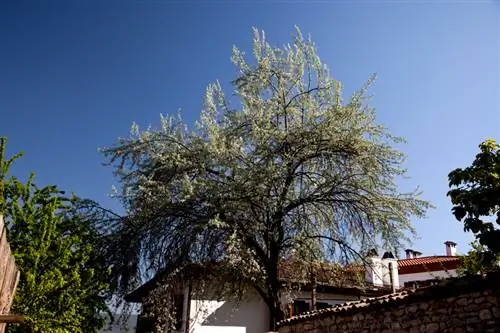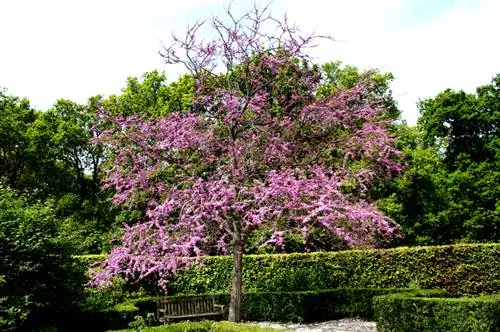- Author admin [email protected].
- Public 2023-12-16 16:46.
- Last modified 2025-06-01 06:02.
Olive willow is a species-rich genus of plants from the oil willow family. Most species grow like a shrub, but some varieties of wintergreen olive willow are also available commercially as standard stems.

How do I get an olive willow as a standard tree?
It is possible to grow olive willow trees as a standard tree by planting a strong, straight shoot and removing the remaining side branches. Ready-made trees on trunks, such as “Limelight”, “Maculata” or “Gilt Edge” are also available online.
The genus of olive willows (Elaeagnus) includes over 40 species that belong to the family of olive willows (Elaeagnaceae). The robust trees grow as shrubs, less often than trees, and are mainly native to Asia, but also to southern Europe and America.
Species overview
Olive willows include both deciduous and evergreen shrubs, which also differ in their foliage color and flowering time, as well as different heights, frost hardiness, s alt tolerance and location requirements. Some species bear edible fruit, others bear thorns.
- Elaeagnus angustifolia - Narrow-leaved olive willow (large shrub or small tree with thorny branches, broadly spreading, resistant to drought; leaves grey-green, silvery scales underneath; flowering time in June/July)
- Elaeagnus multiflora - Edible olive willow (hardy, robust, unreinforced shrub approx. 2-8 m high; leaves dull green, silvery brown scales underneath; flowering time in April/May; edible dark red-brown fruits, sweet-sour and juicy)
- Elaeagnus ebbingei - Wintergreen olive willow (evergreen shrub, upright growing, up to 2.5 m high; leaves elliptical, shiny dark green on top, silvery scales underneath; flowering time in October/November)
- Elaeagnus umbellata - umbellate olive willow (growth height approx. 4 m; flowering time in April/May, fruits pea-sized, red; leaves with silvery scales on the top and bottom)
- Elaeagnus pungens - thorny olive willow (evergreen, broad-growing shrub, height approx. 2.5 m; twigs thorny; leaves elliptical-oblong, often curled, shiny dark green on top, dull grey-white scales underneath; flowering period from September to December)
Training the olive willow into a trunk
Most Elaeagnus varieties available are offered as shrubs. Basically, these can be trained into a trunk with a crown through targeted pruning. To do this, choose a strong, straight shoot of the bush and stake it, while the remaining side branches are removed except for a few thinner ones. The side branches are also gradually cut out so that a little trunk is created over time. If this is too time-consuming for you, you can choose from a selection of the finished trees, the so-called “balls on a trunk”, which are available in the varieties “Limelight”, “Maculata”, “Gilt Edge” in the online shops (€34.00 on Amazon) are available.
Tip
Despite good frost resistance, the young olive willow bushes require frost protection in harsh winters. Frost hardiness increases with age.






